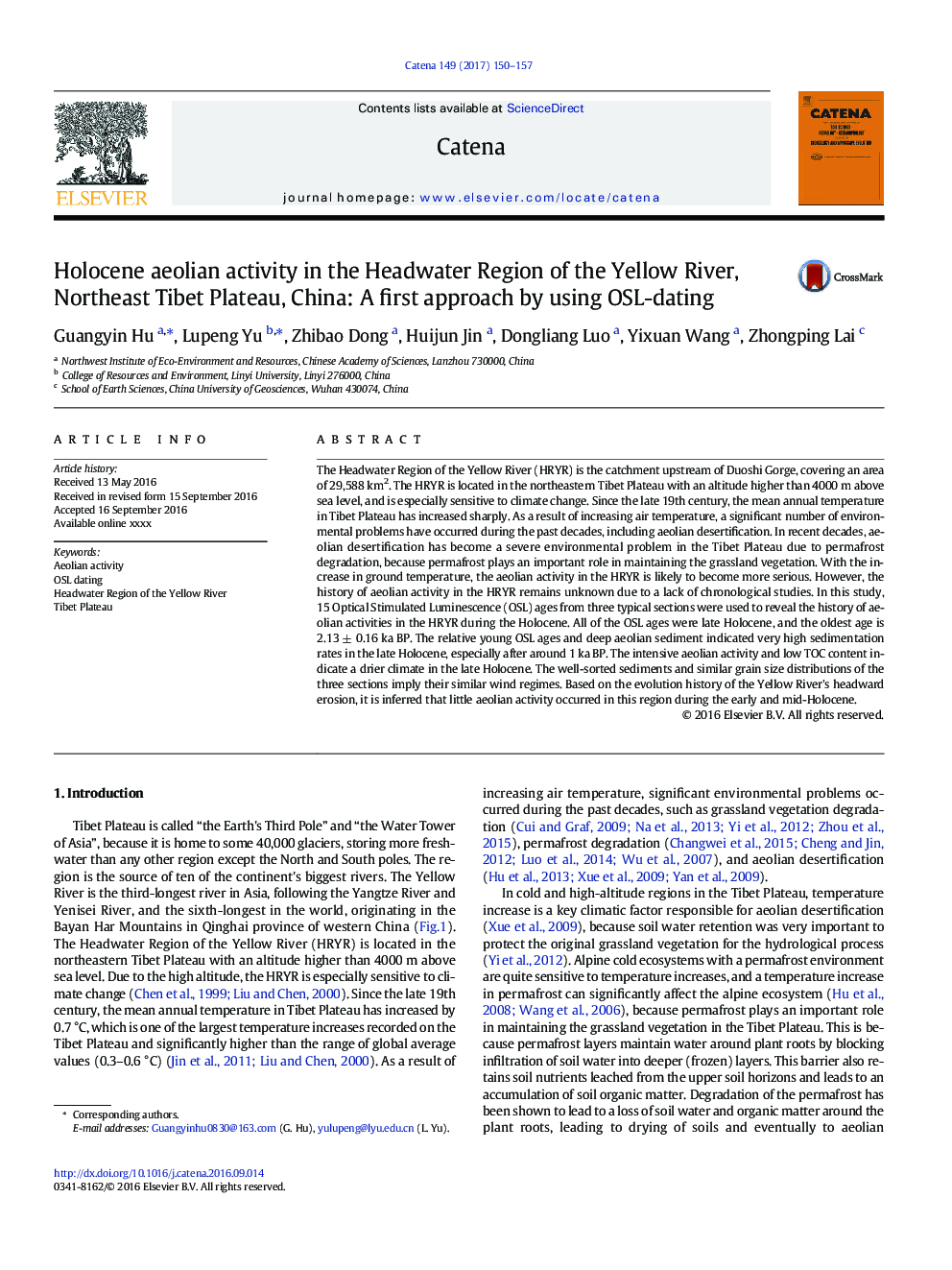| کد مقاله | کد نشریه | سال انتشار | مقاله انگلیسی | نسخه تمام متن |
|---|---|---|---|---|
| 4570856 | 1332079 | 2017 | 8 صفحه PDF | دانلود رایگان |
Highlight
• Holocene aeolian activities were revealed using OSL dating.
• Aeolian sediment deposition mainly occurred in the late Holocene.
• The headward erosion of the Yellow River played an important role in aeolian activities.
The Headwater Region of the Yellow River (HRYR) is the catchment upstream of Duoshi Gorge, covering an area of 29,588 km2. The HRYR is located in the northeastern Tibet Plateau with an altitude higher than 4000 m above sea level, and is especially sensitive to climate change. Since the late 19th century, the mean annual temperature in Tibet Plateau has increased sharply. As a result of increasing air temperature, a significant number of environmental problems have occurred during the past decades, including aeolian desertification. In recent decades, aeolian desertification has become a severe environmental problem in the Tibet Plateau due to permafrost degradation, because permafrost plays an important role in maintaining the grassland vegetation. With the increase in ground temperature, the aeolian activity in the HRYR is likely to become more serious. However, the history of aeolian activity in the HRYR remains unknown due to a lack of chronological studies. In this study, 15 Optical Stimulated Luminescence (OSL) ages from three typical sections were used to reveal the history of aeolian activities in the HRYR during the Holocene. All of the OSL ages were late Holocene, and the oldest age is 2.13 ± 0.16 ka BP. The relative young OSL ages and deep aeolian sediment indicated very high sedimentation rates in the late Holocene, especially after around 1 ka BP. The intensive aeolian activity and low TOC content indicate a drier climate in the late Holocene. The well-sorted sediments and similar grain size distributions of the three sections imply their similar wind regimes. Based on the evolution history of the Yellow River's headward erosion, it is inferred that little aeolian activity occurred in this region during the early and mid-Holocene.
Journal: CATENA - Volume 149, Part 1, February 2017, Pages 150–157
